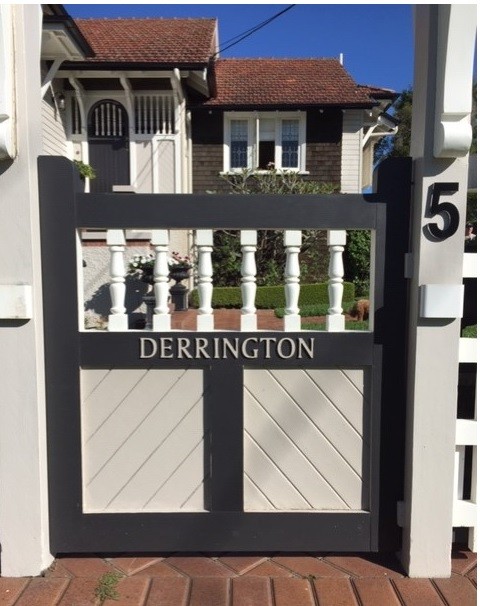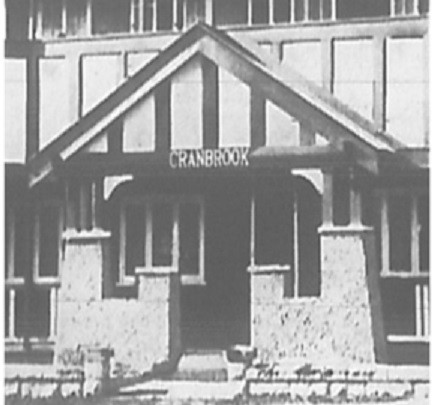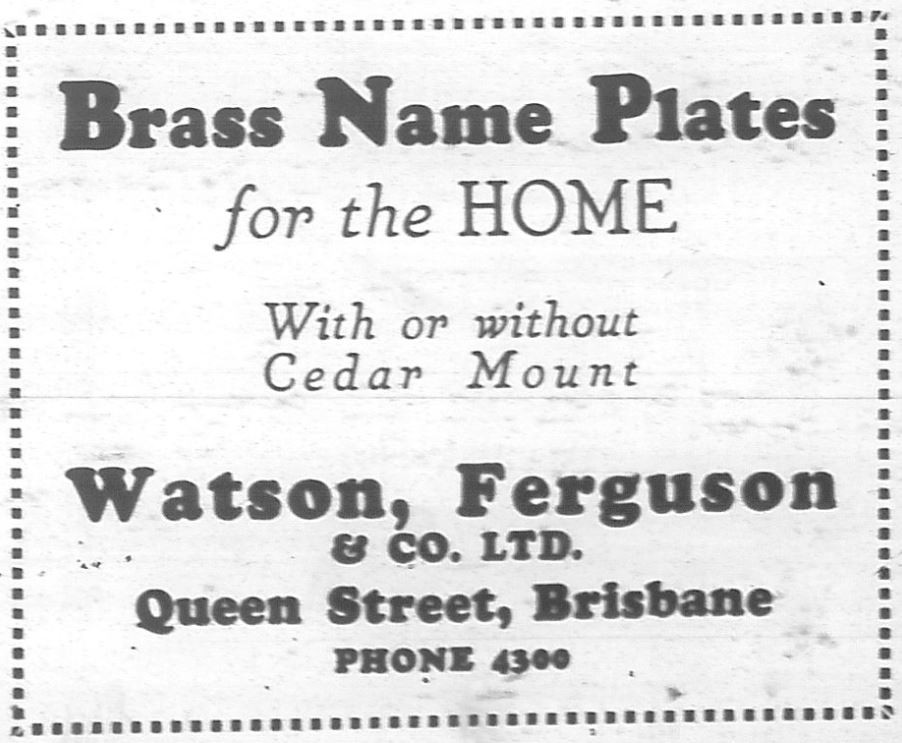Homes: What’s in a name?
By Stephanie Ryan, Research Librarian, Information Services | 28 May 2021
What is in the name of a house? A telephone enquiry received recently by State Library posed these questions:
- Where did a house name Joeann came from, and why the unusual spelling?
- Why have a house name?
- Where were house names registered and claimed?
It opened the topic of house names: their origin, purpose and conventions.
Daily Telegraph (Sydney), 7 October 1954, p 28.
An amusing way of saying Our home spelt backwards
House name origins
It turned out that when the ownership of the house, Joeann, was examined, the given names of early owners of this particular residence were Joe and Ann. The name Wilmar similarly reflected the first part of the names of the couple who built their house - William and Mary.
Sometimes a house name might reflect a location and the origin of the owner. Scottish Charles Colton, who owned four acres on Kedron Brook, named his first home there Burnside Cottage. He used a Scottish word from his homeland to indicate his home was by the brook.
Names could be humorous, such as Gunnadoit and Sheildo. They could acknowledge the culture of Aboriginal and Torres Strait Islander people, like Nindethana, meaning ‘place of a corroboree’ or ‘ours’. The owner of Nindethana named his previous home Glamis after the ship on which his family arrived.
A name could be linked to other important events in a family’s life. The Hudsons were enthusiastically involved in the regatta event, Henley-on-Brisbane, and so named their home Henley for a period of years.
House names could suggest the owner’s interest and identity. Emily Skyring planted extensive rose gardens at her Northgate home, and two of her daughters featured Rose in their names. She named her home Rosecleer. After Emily Skyring died, her three daughters remaining in the house named the house Rosellen, which included the third daughter, Ellen, in the home’s name and so reflected who the owners were. When the house was sold it became Loma Linda, but eventually returned to Rosellen with a later owner, indicating the house’s history.
It was not uncommon for house owners to take their house names with them to each subsequent home. J Henry Hancock owned three family homes, each named Scotby: two in Highgate Hill and one in East Brisbane. The name referred to a family place of origin in Cumbria. When the second house was sold to the Queensland Premier of the time, William Kidston, a Scotsman, the name was changed to Dorra-Tor, a Scottish place familiar to him. The name has been retained down the years by later owners.
Henry Roberts, the builder, named both his homes Malayta, after an island from which many South Sea Islanders came to work in the Queensland sugar industry. There was also a significant Australian missionary presence there. After he moved to his new Malayta in Kedron, the owners of his first home kept the name Malayta until the advent of widespread house numbers in the 1950s.
Why have a house name?
House names could identify a house in a time when numbering had not been introduced. It was helpful for an owner to retain the house name at a new address because the link between the owner and his home was already familiar. The name usually had happy associations, so it was comfortable and practical for the name to move with them. House numbering became more common during the 1950s, and so house names, which were neither compulsory nor pervasive, fell into disuse.
If there was no house name it was a matter of identifying a home by the owner describing what it was near, such as a tram stop, train station, shop or another well-known landmark, or stating how many houses down the street it was. Visitors also enquired in the vicinity.
The Telegraph, 13 December 1900, p 8.
Electoral list: how voters provided their addresses
Where house names can be located
House names can be found in electoral rolls and post office directories with residential addresses until 1939, or the local council’s water drainage plans. They can also be found on early maps, old photographs, postcard addresses and letters, as well as references to family events in Trove newspapers.
Authority to use house names, and placement of them on a property
The selection of house names was very much a personal thing and a matter of choice. There was no central register of approved names on which to draw, and no official notification of a name was required. A house name was usually prominently displayed so that it could be easily identified. The gate, fence, veranda, house entry or front wall were the usual places.

Photo courtesy of the owners.

Queensland Society Magazine, October 1924, p 27.
House names prominently displayed for address recognition
House names had a useful purpose in identifying homes before house numbering was common, but they are also a link with the past and may reflect the origins, interests and values of earlier owners, and so create an interesting connection to the history of a home.

Queensland Society Magazine, November 1924, p 13.
Find out more
Use State Library catalogue, One Search to find resources on house names or visit our house histories pages to extend your research journey.
Search Trove historical newspapers with the term ‘house names’ in ‘the phrase’ search box to discover suggestions for house names, views of particular selections of names, amusing dilemmas, and problems of not having one.
More information
Family History Research Guides - https://www.slq.qld.gov.au/research-collections/family-history/family-history-research-guides
One Search - http://onesearch.slq.qld.gov.au
Comments
Your email address will not be published.
We welcome relevant, respectful comments.